Weekly Recap
US stocks rose sharply last week, and the USD rose for a fourth straight week. News that the US and China agreed to a 90-day trade tariff truce boosted the market mood. The US agreed to lower tariffs to 30% from 145%, and China agreed to lower tariffs to 10% from 125%. The US also agreed to $600 billion worth of deals with Saudi Arabia.
On the data front, US CPI and inflation eased to 2.3% YoY, down from 2.4%, defying expectations of remaining at 2.4%. PPI, which measures inflation at the factory gate level, was also lower than forecast, falling by -0.5%, its largest decline in 5 years. The data calmed concerns over the inflationary impact of Trump’s trade tariffs. That said, trade tariffs are still expected to be inflationary, and the effect could take several months to be noted.
The combination of lower inflation and trade optimism boosted US stocks higher. The S&P 500 turned positive on the year, up 4.7% last week alone. The tech-heavy Nasdaq 100 outperformed, rising 7.5% last week.
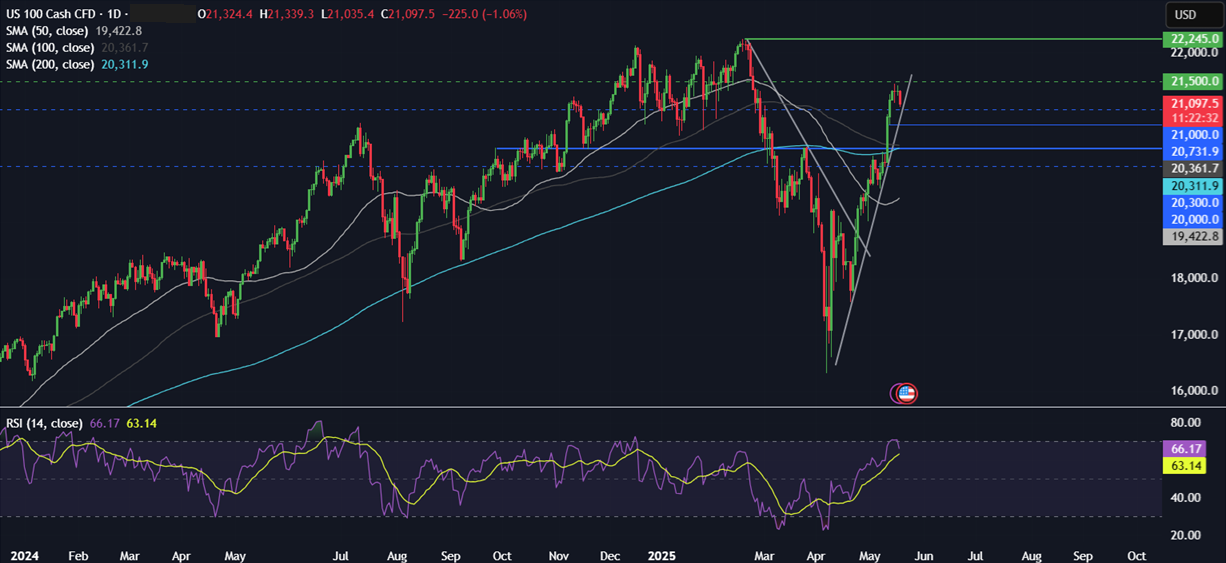
Trade talk will continue to be a focus, with any trade-related headline likely to move the market. Any deal news, particularly regarding Japan or the EU, could influence sentiment.
PBoC LPR (Tuesday) & Chinese activity data
The PBoC will announce its Loan Prime Rate on Tuesday and is expected to reduce this by 10 bps, with the 3-year at 3.1% and the 5-year at 3.6%. Reductions would not be as surprising given that the PBoC governor announced measures to ease policy earlier this month, including cuts to policy interest rates, the reverse repo, and the standing lending facility. These measures come amid signs of economic slowdown in China following weaker-than-expected PMI figures earlier in the month. Today, China’s retail sales were weaker than expected as domestic demand falters. However, in April, Chinese industrial production rose by more than expected despite pressure from elevated US trade tariffs.
The Hang Seng has recovered to a 6-week high. More easing from the PBoC could lift stocks higher.
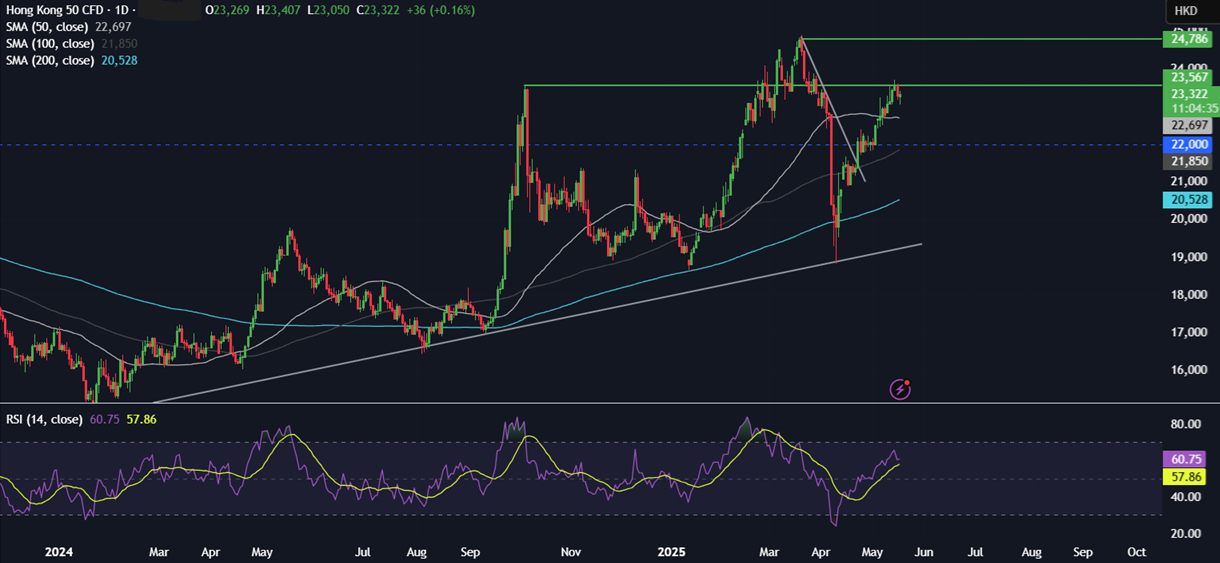
RBA (Tuesday)
The RBA is expected to cut interest rates at the policy meeting by 25 basis points to 3.85%, down from 4.10%. The RBA left the rate unchanged at the April meeting, which was unanimous after cutting in the February meeting. The language in the April meeting provided few clues regarding future rate cuts due to the uncertain outlook. The RBA noted a welcome continued decline in underlying inflation, but noted risks on both sides, and inflation could move in either direction. Whilst RBA governor Bullock said policymakers have not decided on the next move, the market is still almost fully pricing in a rate cut this week to support the economy. Some banks are even calling for a 50 basis point move as recent data has shown a contraction in household spending and building approvals, whilst inflation remains within the 2%-3% target, supporting the case for further reductions.
A dovish-sounding RBA could pull AUD/USD lower. The pair consolidates between 0.6350 and 0.65.

Canada CPI (Tuesday)
In March, Canada’s CPI fell from 2.3% to 2.6% due to lower gasoline and travel prices. Meanwhile, core CPI eased to 2.2% down from 2.7%. In the BoC meeting in April, policymakers agreed that inflationary pressures post-April were difficult to predict, owing to near-term inflation risks from tariffs and economic weakness. Policymakers who favoured leaving rates unchanged warned that a premature move could potentially spur inflation pressures from tariffs. The markets are pricing in almost two 25 basis point cuts from BoC by the end of the year, with the first full move seen in July.
Cooler than expected inflation could pull CAD lower, boosting USD/CAD, which trades capped on the upside by its 200 SMA.
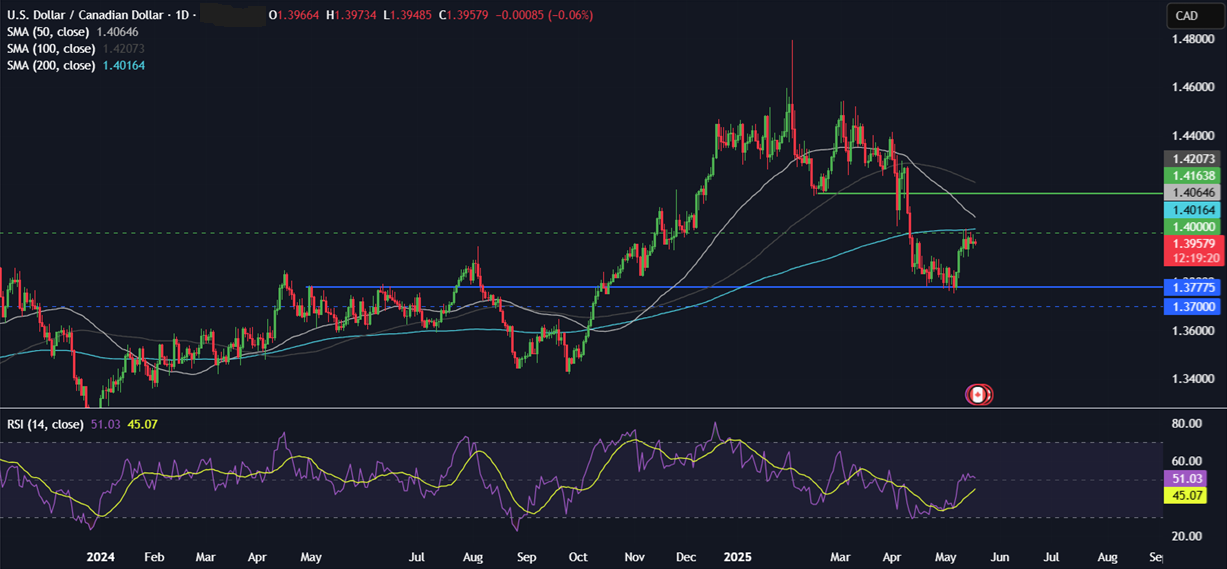
UK CPI (Wednesday)
UK inflation for April is expected to see a sharp jump driven by price hikes in several utility providers, tax increases, and the inflationary impacts from tariffs, which could be starting to feed in. The Bank of England expects this dynamic to continue for the months ahead, with inflation expected to peak at 3.7% in Q3 before the central bank sees it falling back to target. CPI for May is expected to rise to 3.4% year on year, up from 2.6%. Service sector inflation could also tick up as it remains high around the 5% level. UK CPI is closely watched by the Bank of England, with sticky service sector inflation being an obstacle for the Bank of England to cut interest rates more aggressively. There is another CPI released in June before the next CPI rate decision on June 19th, where the central bank is expected to leave bank rates unchanged—the market is pricing in a 55% chance of 25 BPS cuts in August.
A hotter-than-expected UK CPI could see GBP/USD rise towards 1.34 after consolidating around 1.33.
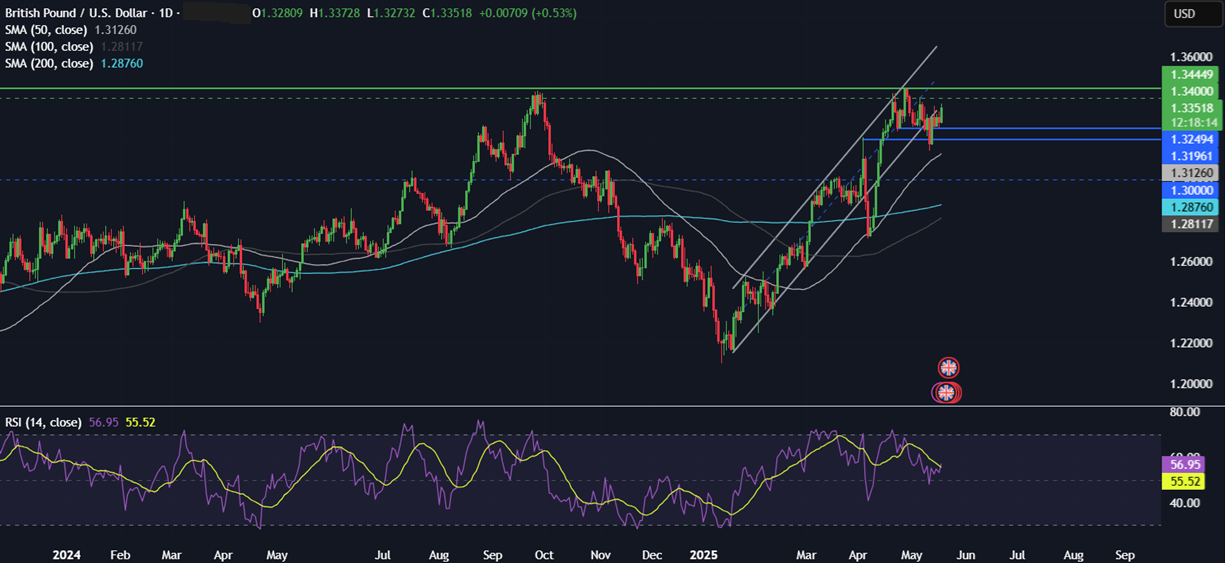
ECB minutes
The minutes of the April meeting will be released on Thursday. At the meeting, the ECB cut rates by 25 basis points as expected, and language around restrictiveness was removed. The cut took the rate to 2.25%, and forward guidance was unsurprisingly non-committal. The statement highlighted increased uncertainty and that policymakers are looking for signs of inflationary pressures offsetting policy. Christine Lagarde didn’t add much more aside from mentioning that no case was made for a 50 basis point cut and that tariffs are being viewed as a demand shock. The minutes may be regarded as stale, given recent significant tariff developments, as a result, they may not impact EUR significantly. See graphs for EUR/USD.
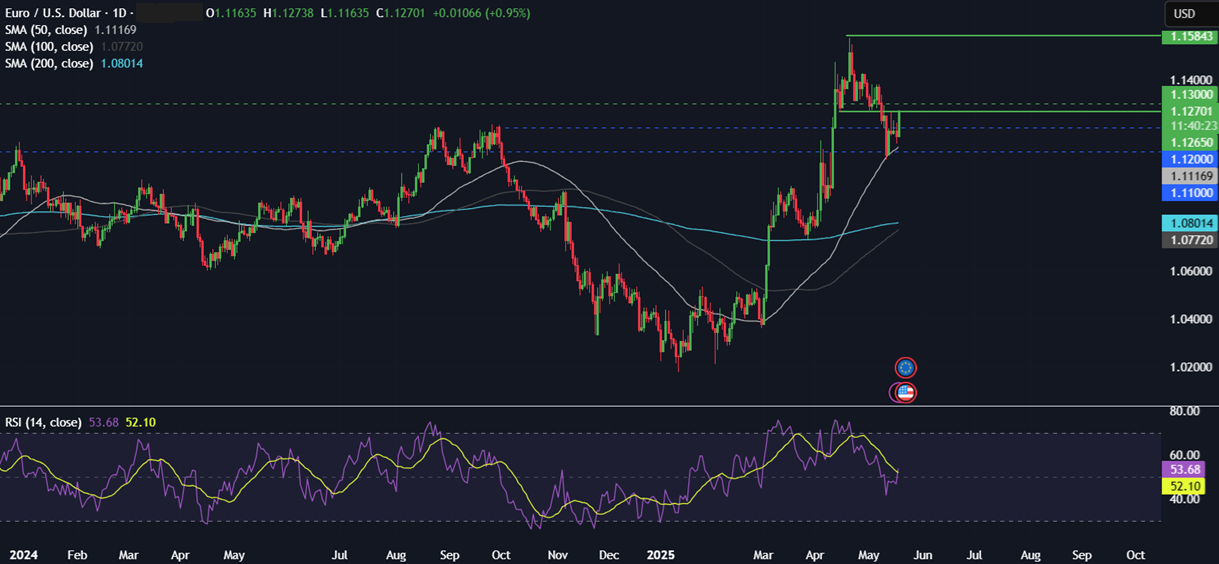
US flash PMIs (Thursday)
The US economic calendar is quiet this week. The focus will be on PMI data, providing timely clues on how the US economy is holding up in light of the trade tariff developments. The PMI data for May is expected to show that manufacturing contracted to 49.9, down from 50.2, while the services PMI is expected to show a slightly slower growth at 50.7, down from 50.8. Weaker-than-expected data could raise concerns over an economic slowdown in Q2, particularly after Q1 GDP contracted. However, upbeat data could ease concerns over the impact of trade tariffs on the US economy, which could help stocks and the S&P 500 rise further.
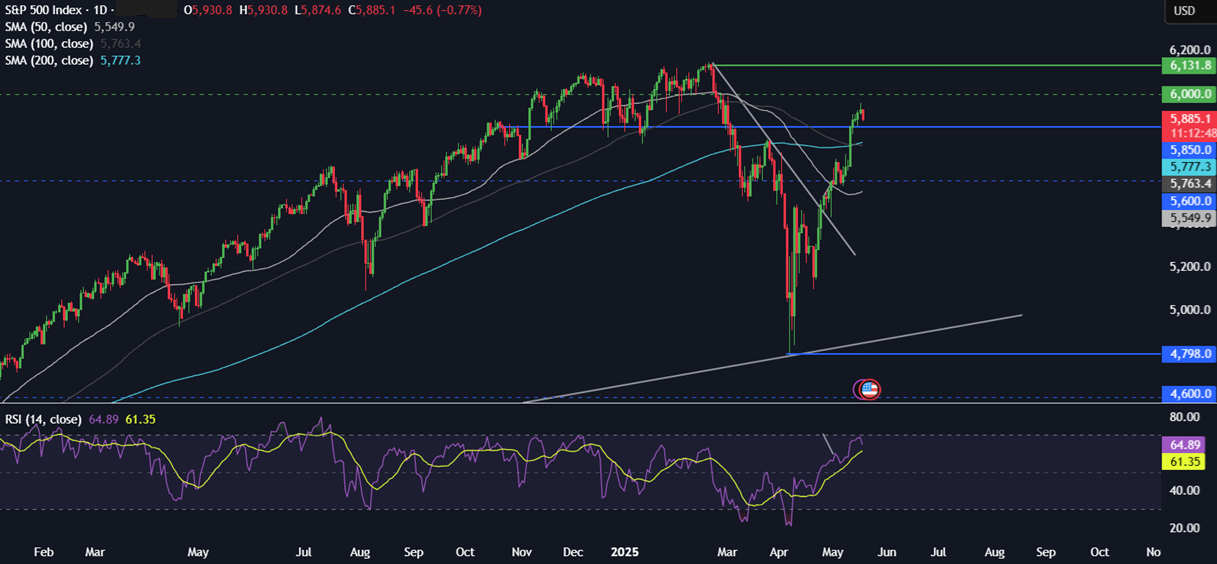
Japanese CPI (Friday)
Japan will release inflation data for April. Core CPI is expected to rise to 3.4%, up from 3.2%. The previous national figure showed core CPI at 3.2% and headline CPI at 3.6%. The April figures are expected to reflect the impact of reducing energy subsidies and fiscal price hikes. Tokyo CPI, which is considered a lead indicator, rose 3.4% from 2.4% and was ahead of the expected 3.2%. CPI jumped to 3.1%, increasing pressure on the BoJ. Policymakers left interest rates unchanged in the June meeting, but policymakers appear ready to hike further should inflation remain sticky. There is some nervousness about the impact of US tariffs, which could affect external demand and may limit the BOJ’s ability to hike in the near term. Japan and Washington are set to kick off a third round of trade talks next week.
Hotter than expected CPI could boost the yen, lifting USD/JPY, which fell sharply last week.
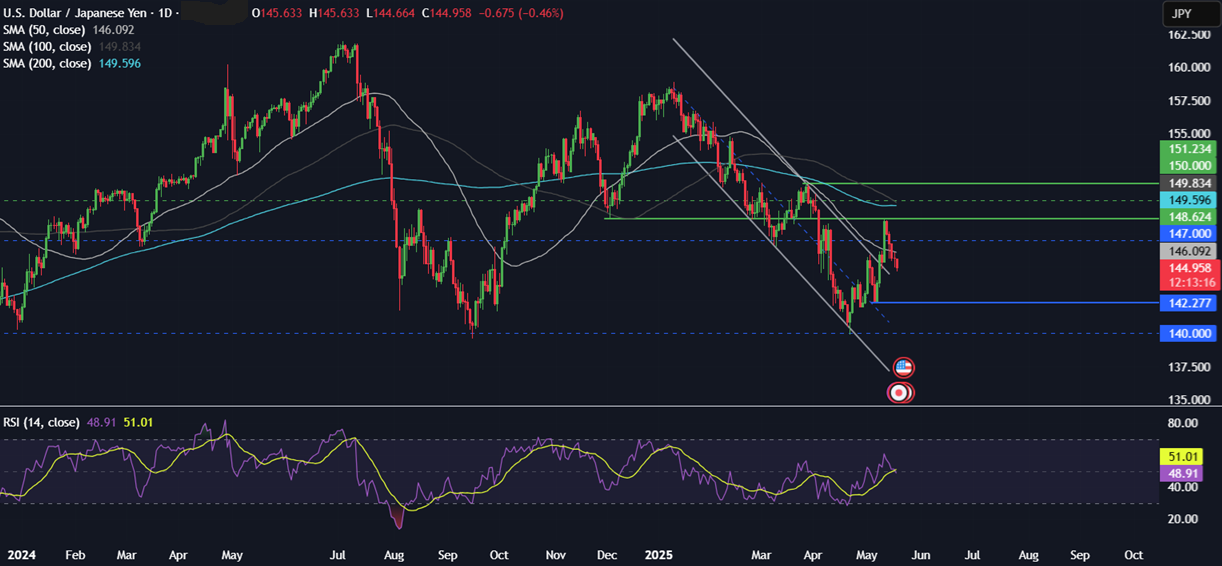
Trading involves risk.
The financial products offered by the Company are complex and come with a high risk of losing money rapidly due to leverage. These products may not be suitable for all investors. Before engaging, you should consider whether you understand how these leveraged products work and whether you can afford the high risk of losing your money.
The Company does not accept clients from the Restricted Jurisdictions as indicated in our website/ T&C. Some services or products may not be available in your jurisdiction.
The applicable legal entity and its respective products and services depend on the client’s country of residence and the entity with which the client has established a contractual relationship during registration.




